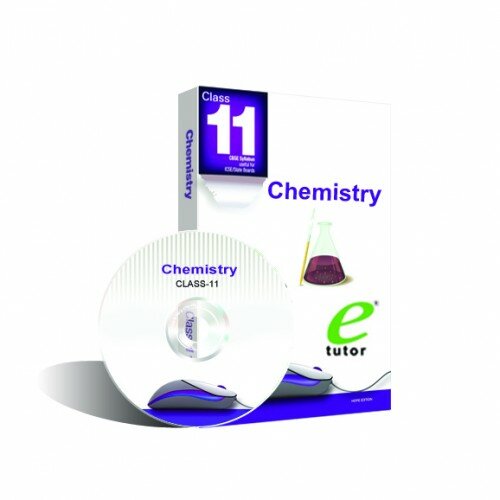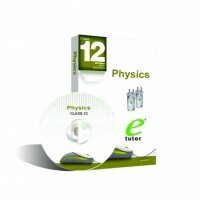Class 11 – Chemistry
₹249.00
Availability: In Stock
CLASS 11 – CHEMISTRY with following units explained in details :Unit I. Some Basic Concepts of Chemistry, Unit II. Structure of Atom, Unit III. Classification of Elements and Periodicity in Properties, Unit IV. Chemical Bonding and Molecular Structure, Unit V. States of Matter: Gases and Liquids, Unit VI. Thermodynamics, Unit VII. Equilibrium, Unit VIII . Redox Reactions, Unit IX. Hydrogen, Unit X. s– Block Elements (Alkali and Alkaline earth metals), Unit XI. Some p-Block Elements, Unit XII. Organic Chemistry – Some Basic Principles and Techniques, Unit XIII. Hydrocarbons, Unit XIV. Environmental Chemistry
Product Description
CLASS 11 – CHEMISTRY
Unit I. Some Basic Concepts of Chemistry
Physical States of Matter, Chemical composition of Matter, Atomic Theory of Matter, Mole Concept
Unit II. Structure of Atom
Heisenberg’s Uncertainity Principle, Rutherford’s scattering experiment, Bohr’s Theory and Hydrogen Spectrum, Arrangement of Electrons in an Atom, Linear combination of atomic orbitals, Formation of Molecular Orbitals, Cathode Rays, Anode Rays
Unit III. Classification of Elements and Periodicity in Properties
Long form of periodic table, Grouping of Elements into Blocks, Periodicity in the Properties of selected Compounds
Unit IV. Chemical Bonding and Molecular Structure
Electrovalent Bond, Characteristics of Ionic Compounds, Valence bond theory, Electronic Theory of Valency, Hybridization, Shapes of Molecules, Polarity in the molecules, Resonance, Formation of Some Homonuclear Diatomic Molecules, Formation and Shapes of Various Hybrid Orbitals
Unit V. States of Matter: Gases and Liquids
Intermolecular Forces, Basic Gas Laws, Kinetic Molecular Theory of Gases, Real Gas Equation
Unit VI. Thermodynamics
Important Thermodynamic Terms, Modes of Energy Transfer, Zeroth Law and First Law of Thermodynamics, Enthalpy and Enthalpy Change; Heat Capacities, Hess’s Law, Enthalpies of Some Typical Reactions, Alternative Sources of Energy, Second law of thermodynamics, Spontaneous and Non-spontaneous processes, Enthalpy and spontaneity
Unit VII. Equilibrium
Equilibrium in physical processes, Factors affecting Equilibrium, Solid – vapour equilibrium, Equilibrium involving chemical systems, Law of Mass Action, Salt-Water Interaction, Acid-Base titrations, Theories of Acids and Bases, pH Scale, Factors influencing pH, Buffer solutions, Relationship Between Solubility and Solubility Product
Unit VIII. Redox Reactions
Electronic Theory of Oxidation and Reduction, Redox reactions, Oxidation number, Writing Balanced Redox Reactions, Redox titrations and redox indicators
Unit IX. Hydrogen
Position of Hydrogen in Periodic Table, Preparation of Hydrogen, Hydrides of hydrogen, Water, Hard and soft water, Heavy Water, Hydrogen Peroxide
Unit X. s– Block Elements (Alkali and Alkaline earth metals)
General characteristics of alkali metal, General characteristics of alkaline earth metals, Extraction of sodium, Manufacture of some Sodium Compounds, Extraction of magnesium, Extraction of calcium, Chemistry of Calcium Compounds – Part I, Chemistry of Calcium Compounds – Part II, Manufacture of cement
Unit XI. Some p-Block Elements
Atomic and physical properties of group 13 elements, Trends in Chemical Reactivity of Group 13 Elements, Chemistry of Boron, Compounds of Boron, Extraction of aluminium, Atomic and physical properties of group 14 elements, Trends in Chemical Reactivity of Group 14 Elements, Carbon and its allotropes, Oxides of carbon, Important Carbon Compounds, Extraction of Silicon, Classification of Silicates : Chemistry of Silicones, Chemistry of Sodium Ammonium Hydrogen Phosphate and Calcium Superphosphate, Chemistry of Ferrous Sulphate and Ferrous Ammonium Sulphate, Chemistry of Ferrous Chloride and Ferric Chloride, Chemistry of Mercurous Chloride and Mercuric Chloride, Tetravalency and Bonding of Carbon, Hybridization in Carbon Atom, Homologous Series
Unit XII. Organic Chemistry – Some Basic Principles and Techniques
IUPAC nomenclature of organic compounds, Types of organic reactions, Electron Displacement Effects in Organic Compounds, Purification of Organic Compounds, Estimation of Elements in Organic Compounds
Unit XIII. Hydrocarbons
Alkanes, Alkenes, Alkynes, Petroleum and Petrochemicals, Aromatic hydrocarbons, Benzene, Structure of benzene
Unit XIII. Environmental Chemistry
Atmospheric pollution, Pollution due to particulates, Water pollution, Land pollution, Green Chemistry
Only logged in customers who have purchased this product may leave a review.







Reviews
There are no reviews yet.